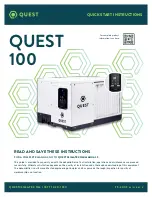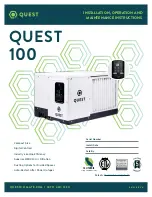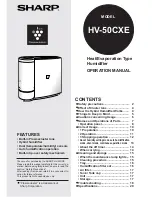
EPD 50 | EPD 70
EN
25
www.eberg.eu
the outlet for the vacuum pump is not close to any ignition sources and there is ventilation available.
8. CHARGING PROCEDURES
In addition to conventional charging procedures, the following requirements shall be followed.
• Ensure that contamination of different refrigerants does not occur when using charging equipment
Hoses orlines shall be as short as possible to minimise the amount of refrigerant contained in them.
• Cylinders shall be kept upright.
• Ensure that the refrigeration system is earthed prior to charging the system with refrigerant.
• Label the system when charging is complete (if not already).
• Extreme care shall be taken not to overfill the refrigeration system. Prior to recharging the system it shall
be pressure tested with OFN. The system shall be leak tested on completion of charging but prior to
commissioning. A follow up leak test shall be carried out prior to leaving the site.
9. DECOMMISSIONING
Before carrying out this procedure, it is essential that the technician is completely familiar with the
equipment and all its detail. It is recommended good practice that all refrigerants are recovered safely.
Prior to the task being carried out, an oil and refrigerant sample shall be taken in case analysis is required
prior to re-use of reclaimed refrigerant. It is essential that electrical power is available before the task is
commenced.
a. Become familiar with the equipment and its operation.
b. lsolate system electrically.
c. Before attempting the procedure ensure that: mechanical handling equipment is availa ble, if required,
for handling refrigerant cylinders; all personal protective equipment is availa ble and being used cor-
rectly; the recovery process is supervised at all limes by a competent person;recovery equipment and
cylinders conform to the appropriate standards.
d. Pump down refrigerant system, if possible.
e. lf a vacuum is not possible, make a manifold so thai refrigerant can be rema ved from various parts of
the system.
f. Make sure that cylinder is situated on the scales before recovery takes place.
g. Start the recovery machine and operate in accordance with manufacturer’s instruc tions.
h. Do not overfill cylinders. (No mare than 80 % volume liquid charge).
i. Do not exceed the maximum working pres sure of the cylinder, even temporarily.
j. When the cylinders have been filled correctly and the process completed, make sure that the cylinders and
the equipment are rema ved from sile promptly and all isolation valves on the equipment are closed off.
k. Recovered refrigerant shall not be charged inio another refrigeration system unless it has been cleaned
and checked.
10. LABELLING
Equipment shall be labelled stating thai it has been decommissioned and emptied of refrigerant. The label
shall be dated and signed. Ensure thai there are labels on the equipment stating the equipment contains
flammable refrigerant.
11. RECOVERY
When removing refrigerant from a system, either for servicing or decommissioning, il is recommended good
practice that all refrigerants are removed safely. When transferring refrigerant inio cylinders, ensure thai only
appropriate refrigerant recovery cylinders are employed. Ensure thai the correct number of cylinders for
holding the system charge are available. All cylinders to be used are designated for the recovered refrige-
rant and labelled for that refrigerant (i.e. special cylinders for the recovery of refrigerant}. Cylinders shall be
complete with pressure relief valve and associated shut-off valves in good working order. Empty recovery
cylinders are evacuated and, if possible, cooled before recovery occurs.
The recovery equipment shall be in good working order with a set of instructions concerning the equip-
ment thai is at hand and shall be suitable for the recovery of flammable refrigerants. In addition, a set of
calibrated weighing scales shall be available and in good working order. Hoses shall be complete with















































